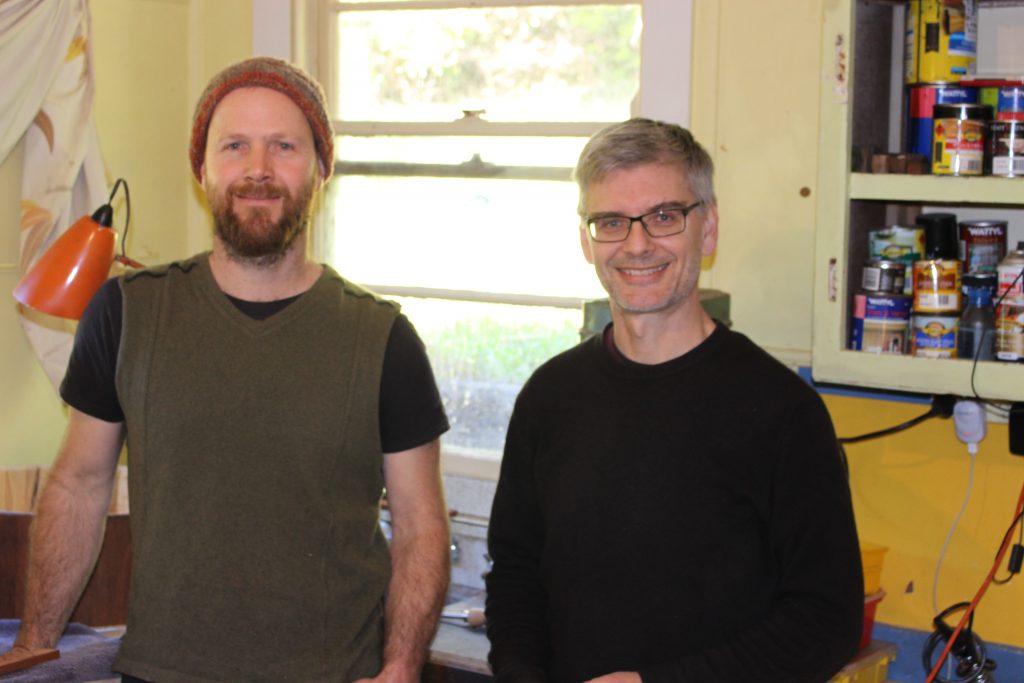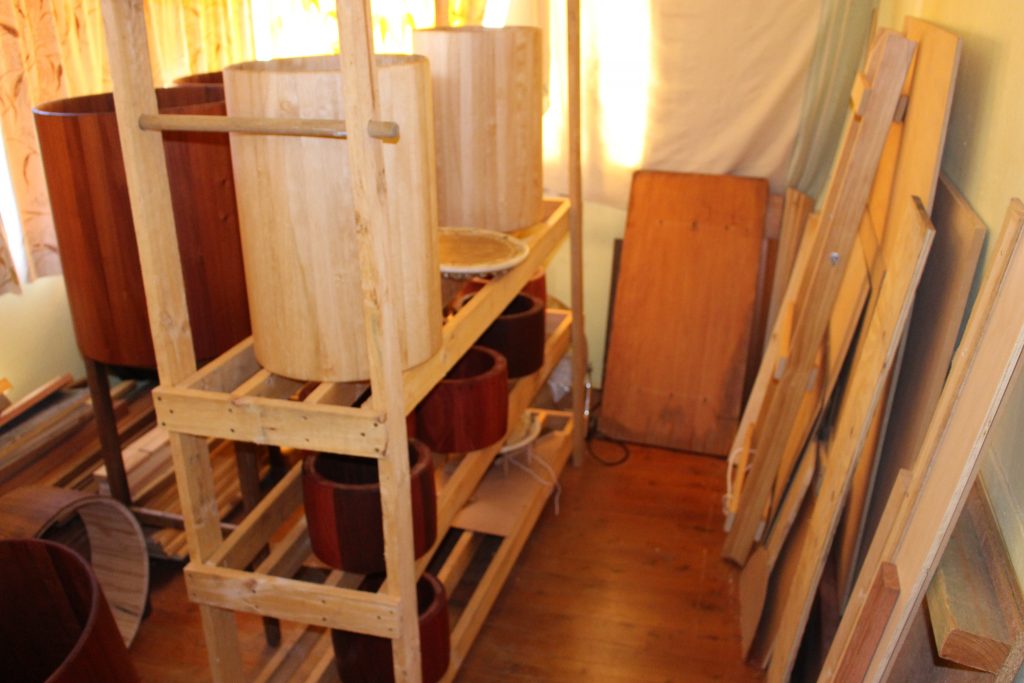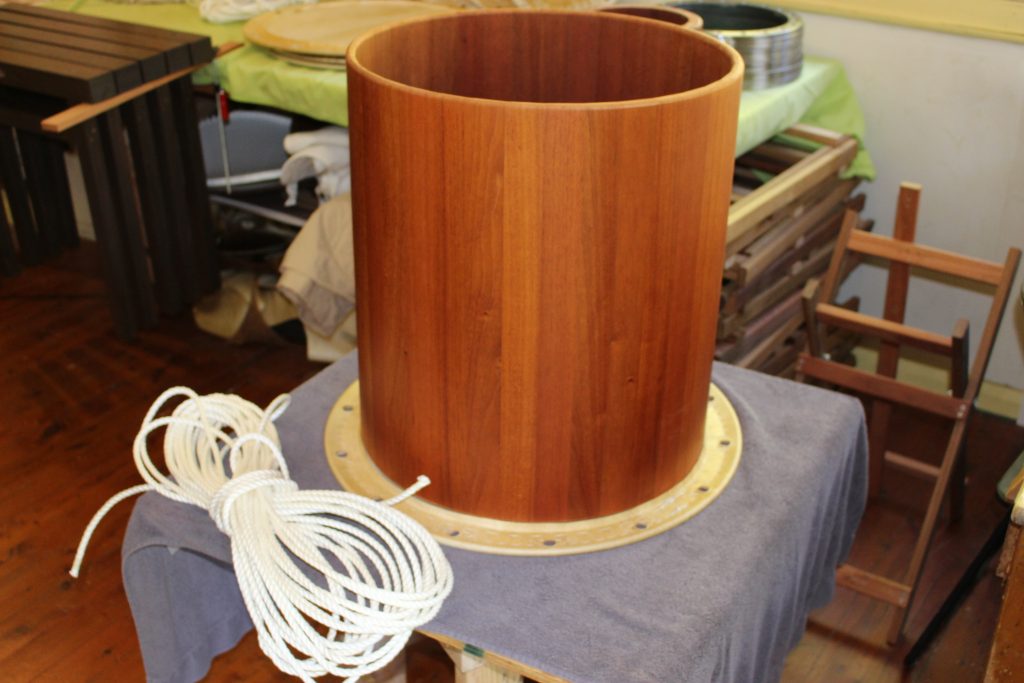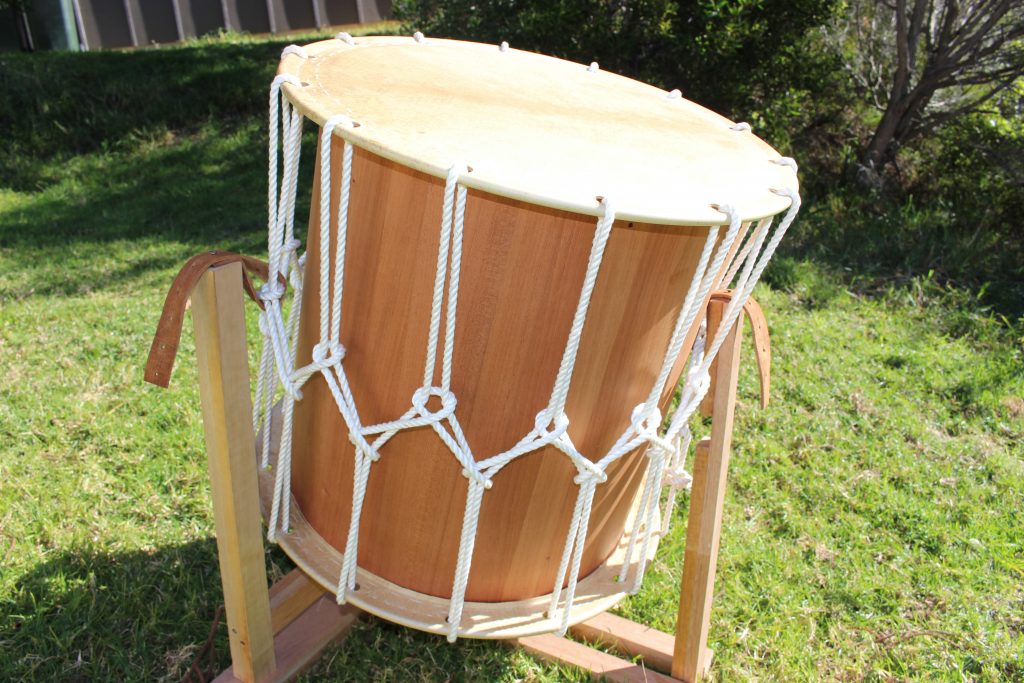Twenty-four Japanese drums hand crafted in the salty air of Tathra are being delivered to Western New South Wales today.
“We often stop work to watch whales breach and blow their spray,” Luke Hamilton says.
Luke and Chris Korvin are both drummers with the Bega Valley based Stonewave Taiko but have branched out to create their own taiko making business.
Taiko Drum Works was born out of Stonewave’s need for more authentic instruments to practice and perform on.
“Stonewave started playing on tyres wrapped in duct tape because we didn’t have any drums to play on,” Luke says.
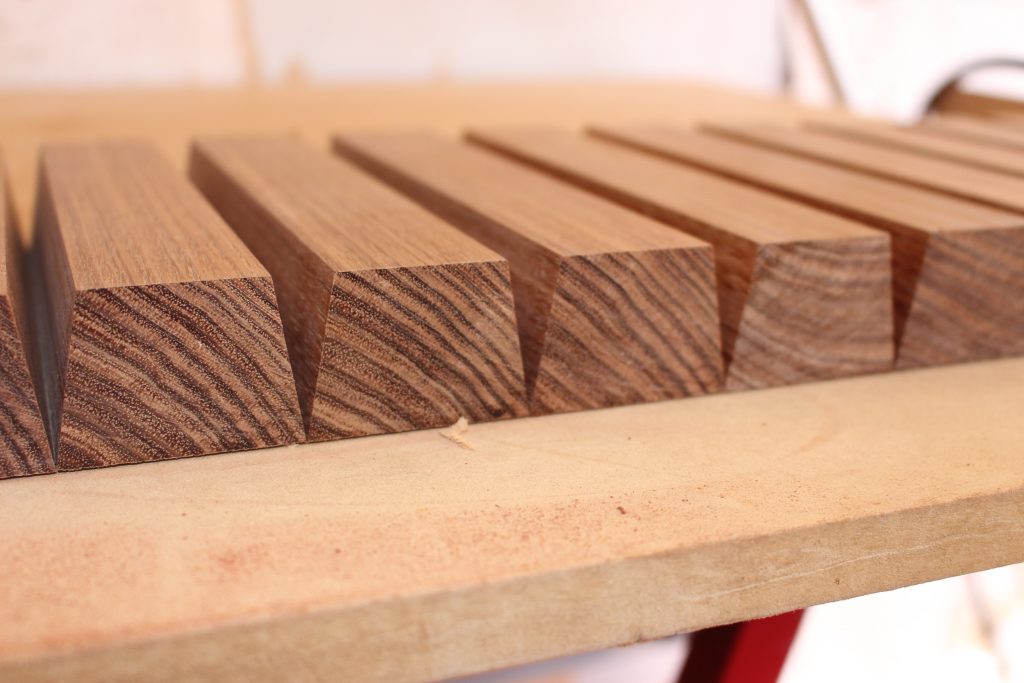
Vertical slats are cut to the correct angle and glued, forming the body of the drum. Photo: Ian Campbell
Taiko is Japanese for drum, performances date back to the sixth century, where they were used as part of Japanese festivals and rituals – which is still the case today.
“Every little town has a taiko group,” Chris explains.
The drums also have a history of being taken into war and used to communicate announcements and motivate soldiers.
“David Hewitt, the leader of Stonewave had one made by a master, and he said – you can take this drum a part and have a look at it. So we did,” Chris says.
“We copied one drum and David played it and gave us the thumbs up and said keep going.”
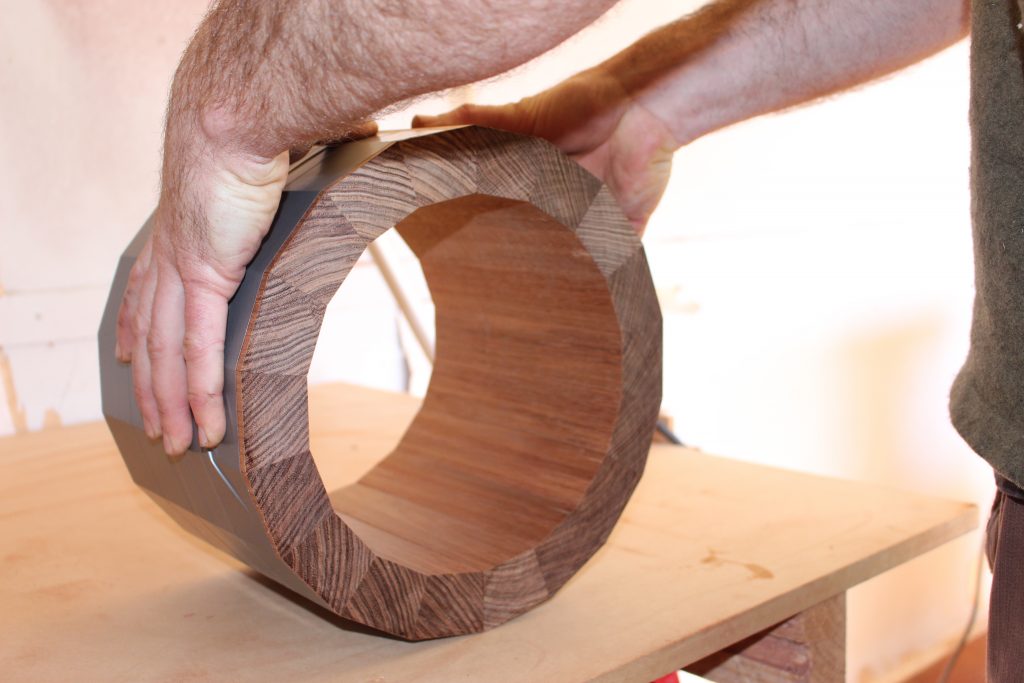
Tape holds the timber slats in place while the glue sets, sanding, and shaping will follow. Photo: Ian Campbell
Chris and Luke have been getting together twice a week to make more drums, outside of that Chris is a dentist and Luke works in Waste Services at Bega Valley Shire Council.
“I’ve been a model builder since I was eight, so I have good fine motor skills,” Chris says.
Luke describes himself more as a tinkerer, which perhaps undersells his skills.
“My main interest has been in metal work and forging and making knives,” Luke says.
In recent months the pair’s taiko making has become more than a hobby that simply supplies Stonewave.
“We’ve been working on an order for 24 drums for a community group called Moorambilla Voices in Western NSW, our drums are spreading across the country which is really exciting,” Luke says.
“They are being split up initially to go to three different schools as part of the MAXed OUT group.”
For 12 years Moorambilla has been building ‘musical and cultural excellence’ from their home base in Tamworth.
The group’s vision is a cracker:
Moorambilla Voices celebrates life’s incredible possibilities.
We empower children and youth to think big and dream wide as they participate in our exceptional yearly choral programs incorporating Taiko, Dance and visual art.
We offer children the rare and valuable opportunity to connect with artists of the highest calibre – composers, musicians, choreographers and visual artists to co-create outstanding works for performance that celebrate the rich culture of this region to standing ovations!
We provide a unique chance for young people in remote and regional communities to share their creative selves in an environment that celebrates capacity. Like our rivers in flood – our creative capacity is powerful, breathtaking and immense.
Participating children come from schools at Brewarrina, Bogan, Nyngan, Bourke, Cobar, Coonamble, Gulargambone, Dubbo, Gilgandra Narromine, Trangie, Walgett, Lightning Ridge, Collarenabri, Warrumbungle, Coonabarabran, Dunedoo, Baradine, Warren, Wellington, Tamworth, Orange, and beyond!
The MAXed OUT Company is geared towards high schoolers with a focus on taiko.
This delivery of drums from the other side of the Great Dividing Range has been funded by a Government grant and will add to a small pool of instruments that are currently being shipped from school to school for rehearsals and performance.
Luke and Chris beam as they detail the process they have gone through over the last eight months to fill the order.
Both explain that taiko making is a family business in Japan passed down through generations over hundreds of years.
Standing in their Tathra workshop, with the smell of eucalyptus turps and tongue oil thick in the air, I sense that both men have approached this traditional craft with the same respect and reverence as a young Japanese apprentice.
“These skills are kept closely within families,” Chris says.
“Finding out how to do this is not easy or straight forward.”
Both dream of being able to visit a taiko workshop in Japan one day.
A range of materials have been used to fill the Moorambilla order, including red deer hides from Western Australia and cow hides from Tasmania.
Raw hides that are soaked in water overnight are the preference so that the unique markings and colouring of the animal are visible on the surface of each taiko.
“The drum is a hide stretched over a metal ring, ropes put tension on the hide, you can change the pitch with different tension on the rope,” Luke explains.
The timber used in the body of the drum adds its own characteristic.
“The thickness and the way the timber has been worked and shaped results in a different tone or pitch as well,” Luke says.
“And we have looked for Australian timber that is close in density and performance to traditional Japanese timbers,” he says.
Plantation Paulownia from Coffs Harbour and West Australian Jarrah have gone through the workshop and a rare sample of Red Cedar from Brogo.
“Brogo Woodworks at Tanja, a friend of ours, had a piece of cedar that was sitting in his workshop covered in dust and rat shit for twenty-five years, he generously sold it to us,” Luke smiles.
Outside of Japan is anyone else making taiko drums?
Chris believes other performance groups are making their own.
“But not on this scale or with this professional finish and quality,” he rightly boasts.
The craftsmanship and materials are reflected in the price, drums range between $1100 and $1800, plus up to $35 for a pair of Japanese drumsticks known as ‘bachi’.
Taiko Drum Works at Tathra is here to stay beyond Moorambilla, Luke and Chris have worked hard to understand this art form in every way and have developed their own systems and work flows – know how they keep close to their chest like an old Japanese master.
This story was made with the support of About Regional members, Cathy Griff, Julie Klugman, Nigel Catchlove, and Maria Linkenbagh. Thank you!


